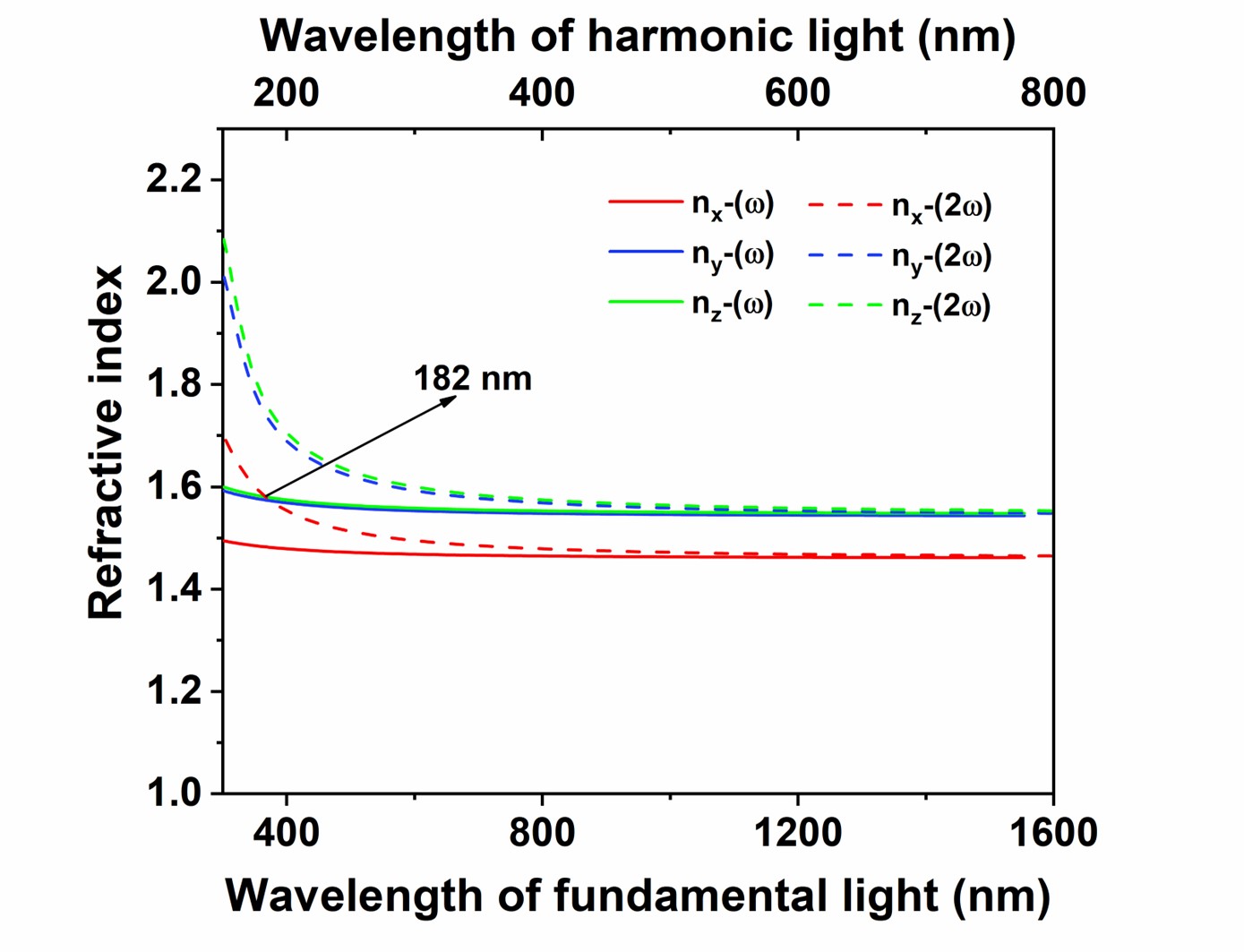Research Progress in Deep-Ultraviolet Nonlinear Optical Crystals in Rare Earth Borate Fluorides
Editor: | Nov 14,2024
Deep-ultraviolet (UV) nonlinear optical (NLO) crystals are the crucial optical component in realizing the deep-UV frequency-doubling output of the all-solid-state laser, and the comprehensive performance directly determines the beam quality and conversion efficiency of deep-UV laser output. However, challenges such as the short transmittance range, low transmittance level, and small birefringence in deep-UV area prevent the phase-matching (PM) from being satisfied, which impedes the realization of NLO frequency conversion in the deep-UV wavelength range. From an optical perspective, the crystal is effectively phase-matchable when the birefringence is large enough to offset the refractive index chromatic dispersion. A phase mismatch occurs when the birefringence is insufficient to compensate for the refractive index chromatic dispersion, typically in the short wavelength region close to the cutoff edge. Therefore, the structure suitable for deep-UV NLO material needs to possess as short as possible deep-UV cutoff edge and as small as possible dispersion to drive the PM wavelength into the deep-UV region.
The Research Center for Crystal Materials of the Xinjiang Technical Institute of Physics and Chemistry, Chinese Academy of Sciences, has been engaged in the research of novel UV and deep-UV borate optoelectronic functional crystals for a long time. The team commenced their research by examining the fundamental factors influencing deep-UV PM process, focused on the structure of the exemplary [B3O6]-type classical compound β-BaB2O4 (β-BBO), and identified the [B3O6] group as the primary functional group for their study. Utilizing a heterovalent ions substitution strategy, the heavier Ba was replaced with the less dispersive rare earth element Sc, and the alkali metal Rb. Additionally, the element F with the largest electronegative was incorporated to further reduce the cutoff edge. This methodology resulted in the successful synthesis of a deep-UV rare earth borate fluoride, Rb2ScB3O6F2 (RSBF). RSBF not only inherits the coplanar arrangement of the [B3O6] groups in β-BBO, but also introduces the fluorinated rare earth polyhedra resulting in a more regular arrangement of [B3O6] groups. This configuration balances three critical NLO optical parameters, namely, a significant second-harmonic generation effect (1.4×KDP), a suitable birefringence (0.088 at 1064 nm), and deep-UV PM ability (λPM = 182 nm). These characteristics position RSBF as a promising candidate for the next-generation deep-UV NLO crystal material.
This research was published in Angew. Chem. Int. Ed. in the form of communication (Angew. Chem. Int. Ed. 2024, e202415066 ), with Xinjiang Technical Institute of Physics and Chemistry as the sole correspondent unit, researchers Shilie Pan and Yun Yang of Research Center for Crystal Materials as the corresponding authors, and the Ph.D graduate student Qianzhen Zhang as the first author. This work was supported by the Xinjiang Uygur Autonomous Region, the Chinese Academy of Sciences, and the National Natural Science Foundation of China.

The shortest type-Ⅰ PM wavelength of RSBF.
附件下载:
 (86) 991-3838931
(86) 991-3838931 lhskj@ms.xjb.ac.cn
lhskj@ms.xjb.ac.cn (86)991-3838957
(86)991-3838957 40-1 Beijing Road
Urumqi, XinjiangChina
40-1 Beijing Road
Urumqi, XinjiangChina